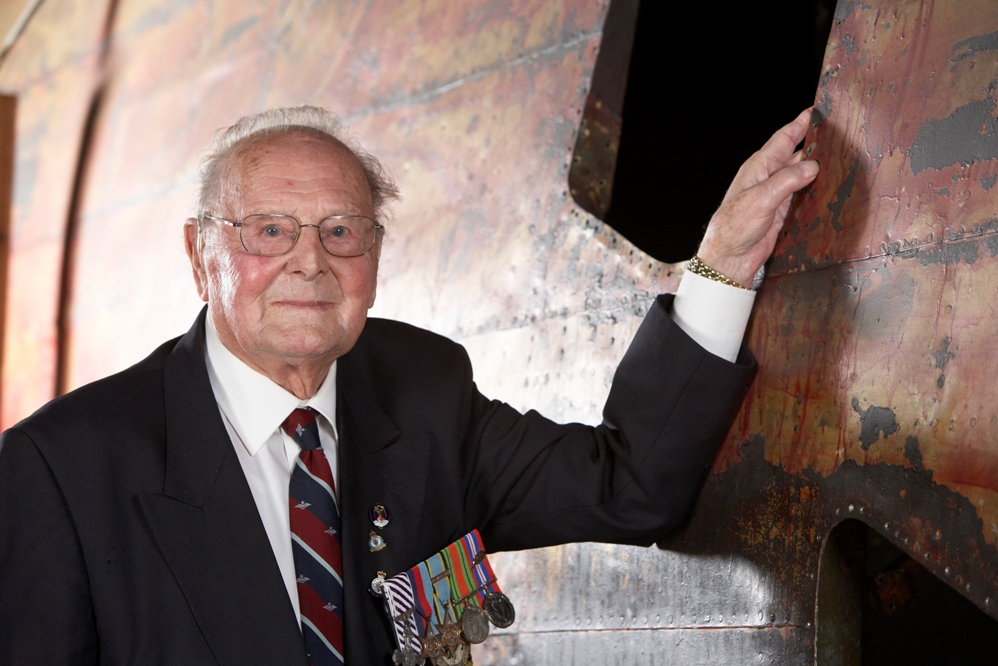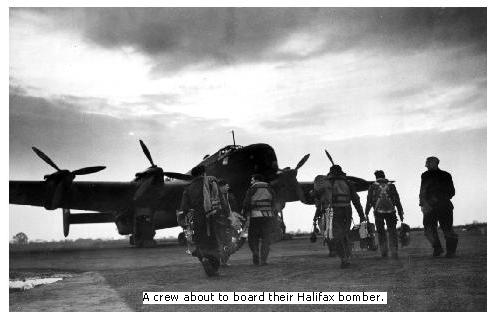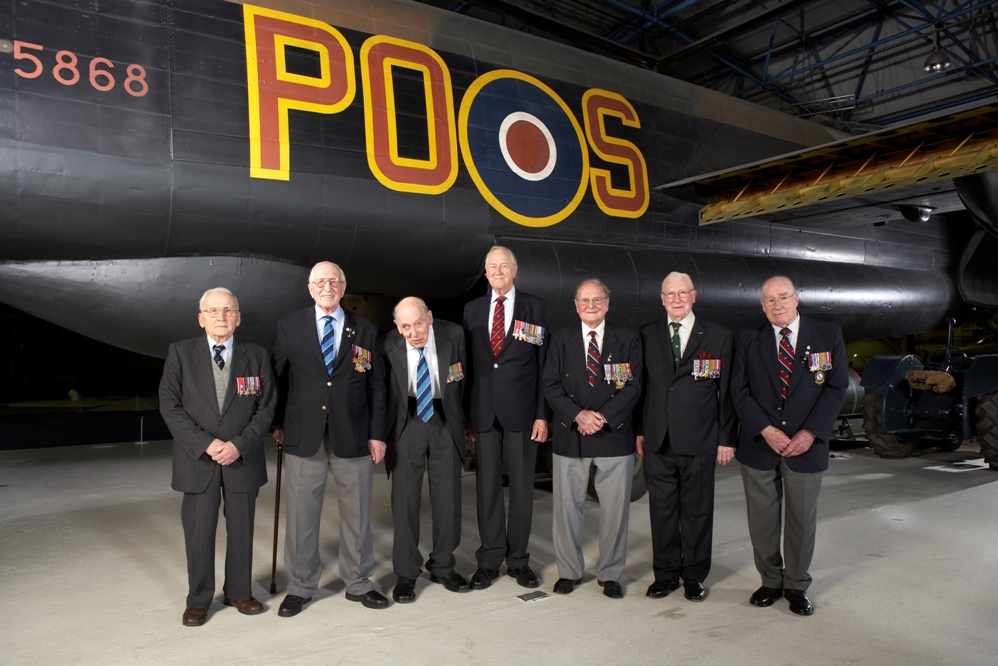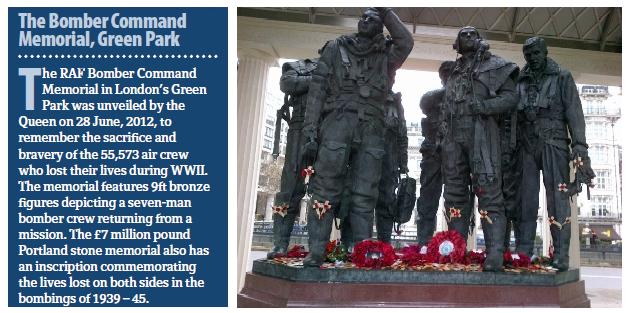David Jordan, Deputy Editor of The Mover, served his time as an apprentice maintaining Buccaneer bombers at Blackburn Aircraft in Yorkshire. His experience with military aircraft meant that it was no chore to run down to see George Dunn, the second-world-war Bomber Command hero, at his home in Brighton for a chat. This is George’s story.

George Dunn spent all his working life in the removals business, joining Pickfords straight from school in 1937 at the age of 14 and remaining with the company until his retirement in 1982. During that time he was manager of several Pickfords branches ending his career in charge of the Hove office in East Sussex. I visited George, now 90, at his home near Brighton last November, but it was not his time in the removals business that I wanted to talk about. In 1941 George volunteered for the RAF and became a pilot in Bomber Command. The seven years he spent serving his country were filled with action and adventure. Today, seventy years on, very few veterans are still around to tell their stories, thankfully George is one of them.
I’ve always believed that age has very little to do with the date on your birth certificate and as George Dunn greeted me at the door of his bungalow in Saltdean it was clear that despite his 90 years he is still a man of great energy with a healthy appetite for life. A hand-tinted photograph of George wearing his blue RAF officer’s uniform sat on the coffee table along side a black and white shot of him with his crew standing by their Halifax bomber.
“I decided to volunteer for the RAF in 1941 before being called up and was sent to the recruiting office in Chatham for an educational test and selection board,” George explained. “I’d applied to be a wireless operator/air gunner rather than a pilot as I didn’t think that having left school at 14 with only a basic education I’d be accepted for training. Anyway the three officers on the selection board were impressed with my test results and I was offered a place on a flying course. Some weeks later I received instructions to report to a receiving centre at Babbacombe near Torquay to be kitted out and later went to N8 Initial Training Wing in Newquay to start my training. This mainly consisted of basic mathematics, elementary navigation, plenty of drill, swimming and cross-country runs.”
“I was eventually sent to Canada to start my pilot training as there was very little training available at that time in the UK. It was December 1941 when we set sail across the Atlantic on a terrible Norwegian ship called the Bergensfjord. The weather was rough, everyone was sick, and there were times we would have welcomed being sunk by a U Boat to put us all out of our misery!”
Once in Canada the new recruits were able to enjoy the RCAF rations and tuck into the kind of food they’d not eaten since the outbreak of war. Unfortunately this was short lived and when they arrived at their training camp it was back to the RAF rations they’d had at home.
“My first flight was on 11 January, 1942, in a Tiger Moth and I went solo on the 21st, it felt marvellous. I finished the course on 28 July and we were all awarded our wings. It was quite a day to celebrate and concluded with a night out with our instructors.”
After returning to England George underwent more training in a variety of aircraft and was eventually sent to a Satellite Station in Lossiemouth where he flew Wellington Bombers and practiced bombing with small practice bombs. “On one occasion a 500 lb bomb got stuck in the bomb bay and it was only by violently manoeuvring the aircraft that I managed to release it,” said George.
 Before being allowed to fly operationally over enemy territory bomber pilots were required to take two trips with an experienced crew before taking their own. “My trips were to Essen and Keil, both heavily defended targets so I was glad to get them out of the way,” said George. “When I got back my crew were anxious to know what it was like and I told them to ‘take a clean pair of underpants!’”
Before being allowed to fly operationally over enemy territory bomber pilots were required to take two trips with an experienced crew before taking their own. “My trips were to Essen and Keil, both heavily defended targets so I was glad to get them out of the way,” said George. “When I got back my crew were anxious to know what it was like and I told them to ‘take a clean pair of underpants!’”
In all George flew a total of 44 sorties, 14 in Mosquitoes over Berlin and 30 in Halifax bombers over other targets in industrial Germany. I asked him how it felt during the raid knowing that innocent people would be killed by the bombing. “I used to think about our people who had been killed in places like London and Coventry by enemy bombing; we were sort of getting our own back I suppose. But I was only 20 years old and at that age you’re not very well versed in the ways of life. The fact is in war women and children get killed and there’s nothing you can do about it.”
 One of the most important missions George took part in was the raid on Peenemunde in August 1943. Peenemunde, a finger of land lying along the Baltic coast close to the Polish border, had been identified as a research and manufacturing centre for the Nazi’s V1 flying bombs and V2 rockets.
One of the most important missions George took part in was the raid on Peenemunde in August 1943. Peenemunde, a finger of land lying along the Baltic coast close to the Polish border, had been identified as a research and manufacturing centre for the Nazi’s V1 flying bombs and V2 rockets.
“When we went into the briefing room we were told the target was a secret research station, we didn’t know what was being made there. What they did say - and they had never said this before about any other target - was that if we didn’t succeed in destroying it tonight we would be sent tomorrow and if necessary the day after that until it was done. We now know why it was so important. Nearly 600 aircraft took part in the raid and we were to be in the fourth wave of the attack. Our target was the living quarters of the scientists and engineers and it was regarded as being the most important. Due to a change of wind direction we were switched to go in on the first wave as the master bomber was worried that the coloured air markers dropped by the pathfinders would be blown over the wrong area. There was very little flak and the Luftwaffe fighters were occupied with an American attack about 100 miles away, so we had no problems dropping our bombs. Later in the raid when the fourth wave made their approach the Luftwaffe had arrived and 46 aircraft and their crews were lost. I was thankful there had been a change of plan.”
The Peenemunde raid put back the Nazi V weapon programme by two months and consequentially saved many thousands of lives.
After the war George continued to fly for the RAF until 1947, testing a number of aircraft types including Mosquitoes, Spitfires, Hurricanes and Mustangs for a maintenance unit in Ismailia, Egypt.
But, despite all the glamour and excitement of RAF Bomber Command, the lure of the removals industry proved too much for George and he returned to Pickfords in 1948 to continue his long career. It was a great privilege to meet him, and those of us that follow should remember the sacrifices the brave men of the RAF made for our freedom.

Below, left to right: W/O John Banfield, Wireless Operator; W/O Arthur Smith, Flight Engineer; F/lt Gordon Mellor, Navigator; W/C John Bell, Bomb Aimer; F/Lt George Dunn, Pilot; W/O Harry irons, Mid Upper Gunner and W/O Dave Fellows, Rear Gunner - all former Bomber Command Halifax crew, from various squadrons.


Read the next Editor's Pick